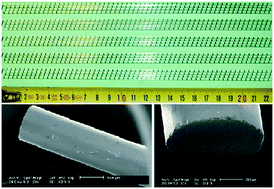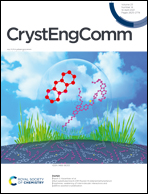Micro-pulling-down growth of long YAG- and LuAG-based garnet fibres: advances and bottlenecks
Abstract
New high-energy experiments in colliders have increased the demand for cheap and radiation-hard detector materials that can be mass produced. The concepts of a new generation of high-energy physics experiments include combined electromagnetic and hadron calorimeters for the simultaneous detection of scintillation and Cherenkov emission using undoped and lanthanide-doped crystalline fibres. The micro-pulling-down (μ-PD) method provides the growth of long single crystalline fibres in a ready-to-use shape without the need for further cutting and polishing. In this highlights paper, recent achievements relating to the μ-PD growth of long Y3Al5O12 (YAG)- and Lu3Al5O12 (LuAG)-based fibres from the Institute of Light and Matter are reviewed. Optimization of the Ce concentration, pulling rate, and crystallizer configuration resulted in the formation of highly transparent LuAG:Ce fibres with a light attenuation length of up to 1 m. Meanwhile, such excellent transparency has not been reproduced in YAG:Ce fibers. The main differences in the crystallization processes of YAG- and LuAG-based fibres are discussed in connection with their physical properties. The paper also addresses the codoping of garnet fibres with Mg2+ ions and growth from non-stoichiometric melts to adjust fiber transmission and scintillation performance.

- This article is part of the themed collections: 2021 Highlight article collection and Crystal Growth


 Please wait while we load your content...
Please wait while we load your content...